Sometimes it’s hard to bet on black. While I primarily wear black clothing at the racetrack, and as a branding dude, I love how well logos stand out on that background, the color can be a pain in the ass to keep clean. This problem is amplified when you’ve got a black car to detail and protect from swirl marks and other paint damage.
Contrary to popular belief, there isn’t some secret ingredient with black colored paint that increases the potential of scratching, paint fading, or increasing the need to take it to the car wash expert or doing it yourself. It just amplifies the appearance of these troublesome – yet all too common auto detailing issues.
So – if you’ve got a black car and looking to find the magic secret to keeping it clean, you’ve found the right article to read. We’re going to provide you with the ultimate guide to detailing a black car like a pro. We’ll break down some of the common paint-related issues black car owners tend to deal, and how to proactively avoid some of them.
Benefits of Detailing a Black Car

Here is a pop quiz – what color was Batman’s first car? If you guessed black, that would be a hell no. In fact, when Bob Kane (DC’s version of Stan Lee) introduced the Caped Crusader in Detective Comics #27, he was actually fighting crime driving around in a red ’37 Ford Coupe Street Rod. Eventually, his identity swapped to black in order to become a true BAMF.
However, Batman’s alter-ego Bruce Wayne was a very wealthy guy, who likely never had to deal with scratches, swirl marks, or other amplified paint damage himself. Regular car guys and gals today don’t have that luxury.
Black is the anti-hero of automotive paint. When it is got a fresh coat of wax or been recently ceramic coated, it’s simply dazzling. But when a bird flies over and decides to empty their bowels on it – well, the bird crap and other debris tend to stand out.
What Kind of Paint Damage is Common for Black Cars?
There is some confusion in the automotive world about the type of paint damage that is common just with black painted vehicles. Here is the skinny – black paint is no different than other colors – except it’s not really a color (we’ll explain this later). Black itself is one that highlights common problems that all vehicle’s deal with every year.
That being said, there are some common paint damage issues that tend to be amplified if you’ve got a black painted ride.
Scratches
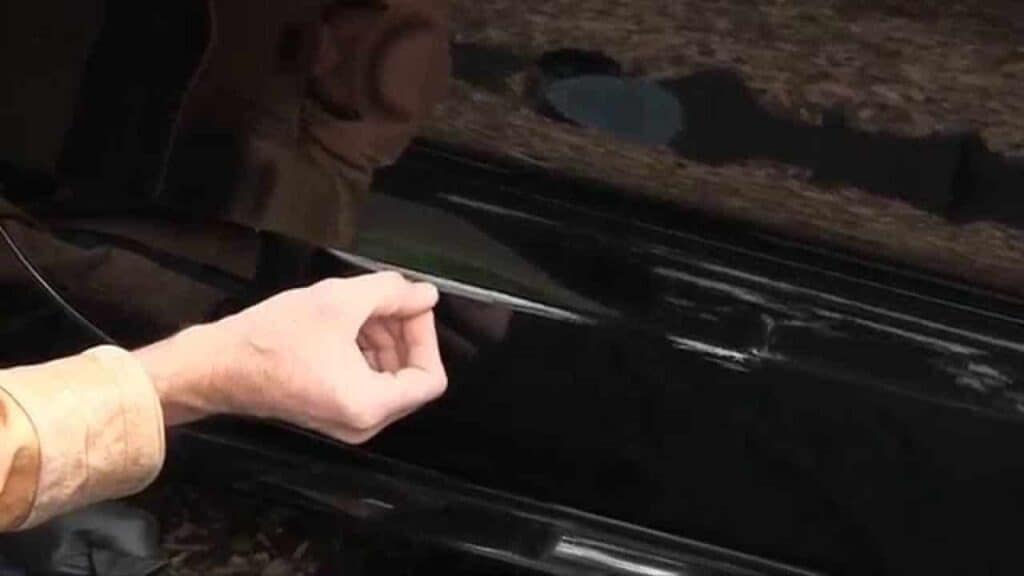
Today’s modern cars, trucks, and SUV’s are simply not painted the same way they used to be. Mainly due to the fact that modern clear coats are thinner than in years past. That being said, when a clear coat is not protected with a layer of carnauba wax, paint sealant, ceramic coating, or paint protection film, it is prone to be scratched.
Depending on the condition of the clear coat, if car wash shampoo is used to clean, or microfiber cloth used to dry, sometimes those scratches will dig into the actual painted surface.
Swirl Marks

Mr. Miyagi wasn’t among the group of professional detailers. In fact, the dude really created some problems when he taught us all to ‘wax on – wax off’ in left-circle/right-circle motions. If you’ll notice, all of his cars were classics – each of them pre-1970’s – that had much thicker paints and clear coats that were less susceptible to scratches and paint swirl marks.
Today, when car owners wash or wax their vehicles using the Miyagi-method, they’ll likely create swirl marks that are embedded in the clear coat. Black paint amplifies these common paint problems, as the sun’s UV rays bounce off the black background but brilliantly display those fresh swirl marks.
Faded Paint

Now this one actually has some science behind it. Black, as most of us know, is NOT a ‘COLOR’. In the visible spectrum, black is the absorption of all colors. Black can be defined as the visual impression experienced when no visible light reaches the eye. Its ‘absorption’ qualities tend to draw the attraction of something else – UV rays produced by sunlight.
Most paint fading is caused by oxidation – which occurs under paint’s clear coating when oxygen and heat are combined. Since black is more prone to absorbing UV light, those clear coat killing rays tend to cause clear coats to wear thin – sooner than other ‘color’s’.
This creates a situation that accelerates the process of oxidation and thus – faded paint. This is why many professional car detailing experts spend more time – and usually charge more money to detail black cars.
Why Should You Detail a Black Colored Vehicle?

Most car owners link detailing with applying polishes or surface-enhancers that help to produce a ‘shine’. While this is awesome for helping to improve the luster of black paint (especially high gloss finish), it really doesn’t do anything to protect the surface.
The only way to protect black painted vehicles from those common ‘pain points’ introduced above is to apply some sort of paint protection product on top. Some of the popular products used to protect the surface of black painted vehicles include car wax (either natural carnauba or synthetic), paint sealants (which are synthetic, lab-created car wax on steroids), a ceramic coating (like Armor Shield IX) or Paint Protection Film (PPF).
That being said, detailing a car by washing correctly, can help to remove contaminants that can slowly eat away at the clear coating. Using the recommended two-bucket method of DIY car washing, and using microfiber towels for drying, can significantly reduce the potential of swirl marks and scratches.

Here are the important steps that should be completed if you’re going to professionally detail your black vehicle:
- Cleaning the Exterior: The first step of detailing is washing the exterior. This removes all dirt, debris, road grime, and other crap from the vehicle surface.
- Protecting the Exterior: Automotive detailing also involves protecting the paint and other exterior parts and pieces. To accomplish this, apply car wax, paint sealants, or ceramic coatings. Many car owners likewise will apply tire dressing or other protectants on other non-painted parts.
- Cleaning the Interior: Interior detailing involves removing debris, vacuuming, and contaminants from the leather, vinyl, or plastic parts and pieces.
- Interior Detailing: The final step in detailing involves applying treatment products as quick detailer sprays designed for specific materials, which enhance the shine and protect the materials from UV exposure.
How to Detail a Black Car

Now we’re gonna get to the nitty-gritty and explain how to detail a black car correctly. For this “how-to” section, we’ll provide some general steps and provide supplies you should gather, which should reduce the potential of scratching, swirl marks, or breaking down the clear coating.
The absolute first rule of detailing a black car is NOT taking it to an automated car wash or manual pressure washer and drying it with a regular towel. While they are incredibly convenient ways of washing a car, it’s a breeding ground for scratching and swirl marks. Hand washing your ride is really the only way to reduce the potential of accelerating paint damage on any colored vehicle.
Now, there are multiple ways of accomplishing this important first step. And just as many opinions on how to correctly wash a black car. So – with that being said, here is my $0.02 opinion on the matter.
Pre-Wash
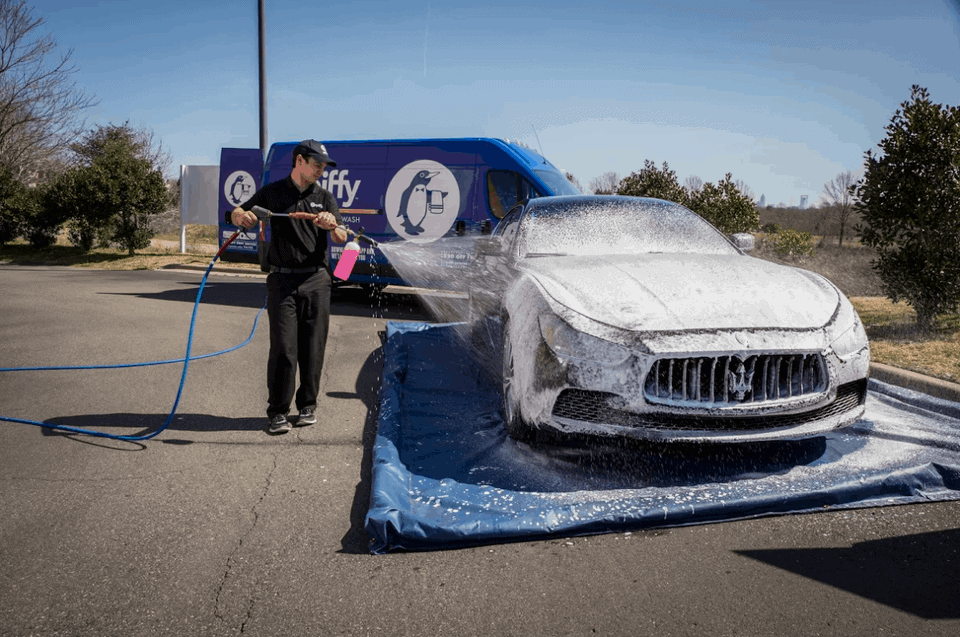
Once you’ve gathered your car washing supplies (read this article to learn what you should use), the pre-wash is the first thing that must be completed – especially on black painted vehicles. The prewash is used to remove surface dirt, debris, and other contaminants from the vehicle surface. But, it’s also used to provide some lubricant for the wash mitt to glide on top of the painted surface.
There are two general ways of starting the process of washing your car.
- Use a water hose with a spray nozzle. Simply rinsing with water is good enough of the first step to pre-wash the vehicle. Use a fine mist setting as opposed to the highest pressure, which can rub dirt over the surface.
- Using a foam cannon. Foam cannons are great for car cleaning and applying a thick layer of soap suds on a vehicle. The foam cannon ‘floats’ soap on top, not forcefully sprays it off.
Clean Your Wheels and Tires

Wheels collect brake dust, which is basically microscopic shavings of metal and carbon. By cleaning the wheels first, you’re removing these paint killing materials from damaging the paint surface. Hear me out for a second before you start rolling your eyes.
When wheels are washed, most people use a spray cleaner, and a brush to ‘scrub the embedded crap off the wheels’. Well, when they do this, debris flies off the wheels and often finds a new home – on the paint (usually the side panels or fenders of your ride). By washing the wheels first – then washing the car’s panels, you’ll fully remove this crap during the car washing part. It’s also a good idea to wash your wheel wells during this step.
*Here is a special tip: Always use separate washing supplies like buckets, brushes, and tire cleaner to clean wheels and tires, so you don’t spread brake dust or metal shavings onto your paint and scratch it. Also, if you’re going to complete engine detailing, do that before washing the exterior.
Use the Two Bucket Car Washing Method
In the interest of saving time – watch this video to see how this is accomplished. If you’re a visual step-by-step learner, click this link to an article we did on how to use a bit of elbow grease to wash your car correctly.
Quick Tip: Don’t use dish detergent to wash your car. Only use special car shampoo or high foaming automotive car soaps.
Drying

Believe it or not – there is a process for drying a clean car correctly. The first thing you need to avoid is using compressed air or air drying. Air compressors have oil inside the lines – which is sprayed on top of your freshly cleaned surface. Air drying will usually result in water spots – even on a ceramic coated surface.
So, follow this general process for drying your black-colored ride.
- Use a Chamois: The chamois is a great first step to remove surface water from the vehicle surface.
- Use Several Microfiber Towels: If you’re not big on the whole chamois treatment, use multiple microfiber towels, to fully wipe and dry the vehicle.
The important step for black cars specifically if ensuring to fully dry the surface (even those hard to reach nooks and crannies like window trim, door jams, and side-view mirrors.
Detailing Mitt or Clay Bar

If you’re looking to really enhance and protect your black painted vehicle, this is a crucial step for removing embedded debris. Now, in full disclosure, this step should be completed if you DON’T have a ceramic coating or PPF applied. If you depend on car wax for your paint protection method, you should first remove the old layer of wax, then complete the clay bar treatment.
Detailing mitts are the way to go for achieving the perfectly smooth surface. This article is a great resource that explains the process of detailing by using the clay bar treatment.
Wax and Polish

Once you’ve completed the above steps, you’ll be ready to apply the car wax and polish. There are some really good ‘combo’ waxing products that have been introduced in recent years. Some consumers prefer using paint sealants as well – to extend the lifespan of protecting the black painted surface.
The main problem with car wax or paint sealants, is you have to frequently remove and reapply in between washes. Car waxes last about two months, while most paint sealants can last up to a year in a perfect world.
This article is a great one for reviewing the pros and cons of car wax and polishes and comparing them to a ceramic coating.
Best Products for Protecting a Black Car

If you’re looking for the best product to protect your black painted car, we’ve got one for you to consider. It’s a DIY version of a professional ceramic coating. Our product is called Armor Shield IX, which is a DIY nano-coating kit comprised of liquid polymer made up of multiple ingredients that work together to provide a semi-permanent layer of protection for automotive paint, wheels, glass, vinyl wrap, and other products – even metal.
It’s a product that works longer than wax, can repel brake dust on wheels, improve visibility on windshields, improves vehicle paint maintenance and reduce the need to frequently wash your car every other day. It’s also one of the best ways of protecting a black-colored vehicle surface from exposure to UV rays – that tends to accelerate paint fading in black cars.
With a ceramic coating, you don’t need to frequently wax or polish your black colored vehicle. Additionally, scratches and swirl marks are less likely to happen, since the coating provides the hard layer of protection over the clear coating.
If you’d like to do some additional research, check out this article entitles “The Truth About Ceramic Coatings.”
Wrapping it Up
Let’s face it – there is nothing better than a brilliant black vehicle. The paint looks so deep that if you placed your hand through it – it’ll disappear. But, with this brilliance in shine also comes with the added steps to protect it from damage, as we’ve described above.
If there is a general theme we’ve tried to get across in this article, it’s that protecting your black vehicle from paint fading and other common issues is a constant job. In fact, the old expression “black isn’t a color – it’s a part-time job” really holds true. But like all jobs, the key to success is working smarter – not harder.
A high-quality ceramic coating is one of those smart investments that will significantly reduce the potential of common black paint pain points, keep it cleaner, and produce a brilliant shine while you drive down the road.





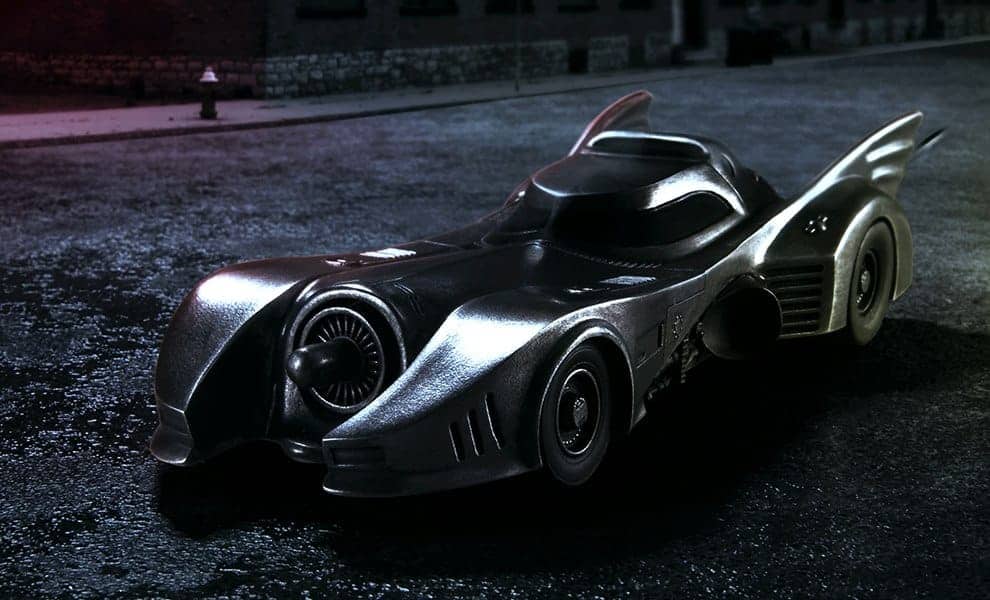
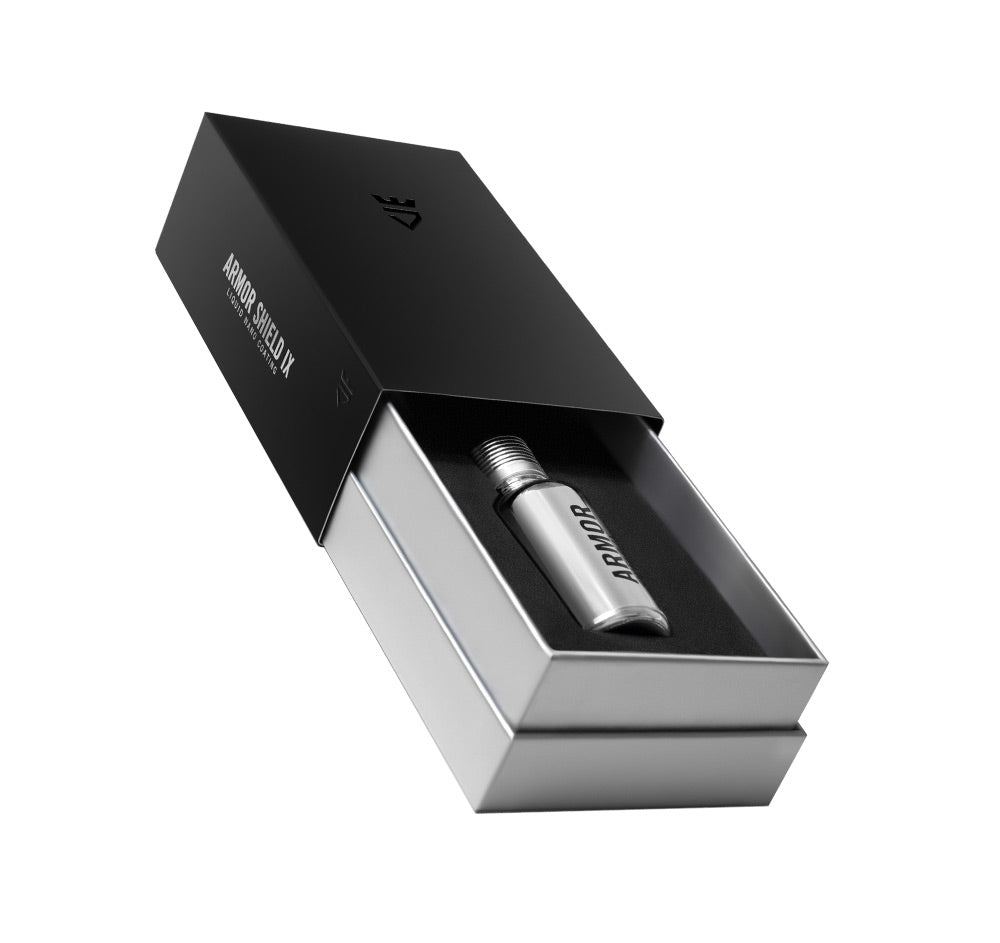



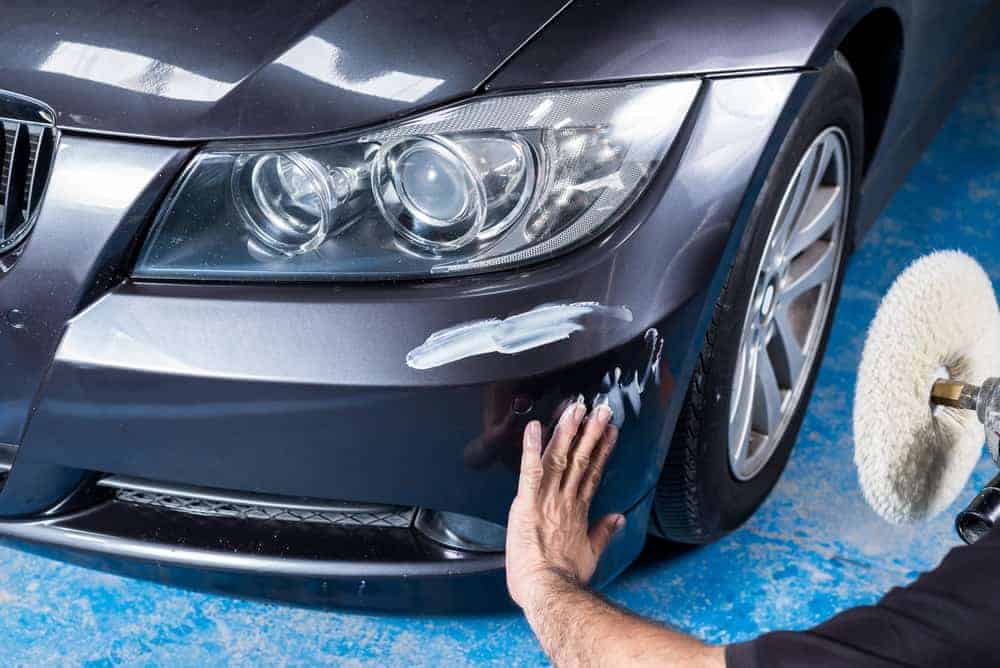


9 comments
Wedding Transport Limousine
Detailing a black car requires attention to detail and a few tricks to ensure that the car’s finish looks its best. Here are some tips for detailing a black car:
Wash the car thoroughly: Before you start any detailing work, make sure that the car is clean. Use a high-quality car wash soap, a soft wash mitt, and plenty of water to wash away all dirt and grime.
Dry the car: After washing, dry the car thoroughly using a microfiber towel or chamois. Make sure there are no water spots left on the surface.
Clay bar treatment: Use a clay bar to remove any remaining contaminants, such as tree sap, tar, or stubborn dirt. Clay bar treatment will leave the surface smooth and ready for polishing.
Polishing: Use a quality polish specially designed for black cars to restore the shine and remove swirls and fine scratches. Apply the polish with a foam applicator pad and work in small sections.
Waxing: Apply a high-quality wax to protect the paint and give the car a deep, glossy finish. Use a soft wax applicator pad and work in small sections.
Clean the wheels: Clean the wheels and tires using a dedicated wheel cleaner and tire shine product. This will give your black car an extra shine.
Final touch-ups: Check the car for any remaining spots or imperfections and use a detail spray or quick wax to touch up any areas that need it.paltransportation.com
Remember to work carefully and methodically when detailing a black car, and always use high-quality products to achieve the best results.
Detailing a black car requires attention to detail and a few tricks to ensure that the car’s finish looks its best. Here are some tips for detailing a black car:
Wash the car thoroughly: Before you start any detailing work, make sure that the car is clean. Use a high-quality car wash soap, a soft wash mitt, and plenty of water to wash away all dirt and grime.
Dry the car: After washing, dry the car thoroughly using a microfiber towel or chamois. Make sure there are no water spots left on the surface.
Clay bar treatment: Use a clay bar to remove any remaining contaminants, such as tree sap, tar, or stubborn dirt. Clay bar treatment will leave the surface smooth and ready for polishing.
Polishing: Use a quality polish specially designed for black cars to restore the shine and remove swirls and fine scratches. Apply the polish with a foam applicator pad and work in small sections.
Waxing: Apply a high-quality wax to protect the paint and give the car a deep, glossy finish. Use a soft wax applicator pad and work in small sections.
Clean the wheels: Clean the wheels and tires using a dedicated wheel cleaner and tire shine product. This will give your black car an extra shine.
Final touch-ups: Check the car for any remaining spots or imperfections and use a detail spray or quick wax to touch up any areas that need it.paltransportation.com
Remember to work carefully and methodically when detailing a black car, and always use high-quality products to achieve the best results.
Patrick
I have a 2018 maserati quattroporte that is black and some swirl marks, can I clay bar this out before your ceramic coating? Do i need a orbital buffer to polish before ceramic? Please send links to ceramic coat process. Thnku
I have a 2018 maserati quattroporte that is black and some swirl marks, can I clay bar this out before your ceramic coating? Do i need a orbital buffer to polish before ceramic? Please send links to ceramic coat process. Thnku
Cori Williams
Hi,
can i polish first, sealant, and then use Armor Shield ?
Hi,
can i polish first, sealant, and then use Armor Shield ?
Dale Pearl
HI Andy is the vehicle coming straight from the factory or directly from the dealership? It can make a substantial difference. If it is coming from a dealership then more than likely there is no need to wait whatsoever. If it is coming directly from a factory you should look at the manufacturing date and add 60 days to that number and that would be the earliest time you should coat a new car.
HI Andy is the vehicle coming straight from the factory or directly from the dealership? It can make a substantial difference. If it is coming from a dealership then more than likely there is no need to wait whatsoever. If it is coming directly from a factory you should look at the manufacturing date and add 60 days to that number and that would be the earliest time you should coat a new car.
Andy
I’m purchasing a new black suv this weekend. I am interested in coating the entire car. Is there a particular time period in which I need to wait being that it is a brand new suv? Or should I be thinking about coating my new vehicle immediately? Thank you..
I’m purchasing a new black suv this weekend. I am interested in coating the entire car. Is there a particular time period in which I need to wait being that it is a brand new suv? Or should I be thinking about coating my new vehicle immediately? Thank you..
Dale Pearl
Hi there! Armor Shield is applied after first prepping the cars surface. If you have swirls and scratches best use a compound polish and try to repair those. Armor Shield will then seal in the condition. There isnt a special way to coat a black car versus a white car. The product is applied in horizontal and vertical passes in small sections at a time. Send us a direct email at hello@test3.unicorns.rocks and I’ll be happy to send you a couple of video links demonstrating the application process.
Hi there! Armor Shield is applied after first prepping the cars surface. If you have swirls and scratches best use a compound polish and try to repair those. Armor Shield will then seal in the condition. There isnt a special way to coat a black car versus a white car. The product is applied in horizontal and vertical passes in small sections at a time. Send us a direct email at hello@test3.unicorns.rocks and I’ll be happy to send you a couple of video links demonstrating the application process.
GM
With all of that, you never said HOW to apply the wax/polish to a black vehicle. Do you apply it in circles, or in a line? If your paint already has swirl marks, what’s the best way to get them out, or at least avoid making it worse?
With all of that, you never said HOW to apply the wax/polish to a black vehicle. Do you apply it in circles, or in a line? If your paint already has swirl marks, what’s the best way to get them out, or at least avoid making it worse?
Dale Pearl
Hi Rick!
No, you would need to remove all wax from the vehicle prior to applying Armor Shield. The wax would prevent Armor Shield from bonding to the surface. Always think of the rule of stacking. You want the longest-lasting products applied at the bottom, closer to the paint/clear coat.
Hi Rick!
No, you would need to remove all wax from the vehicle prior to applying Armor Shield. The wax would prevent Armor Shield from bonding to the surface. Always think of the rule of stacking. You want the longest-lasting products applied at the bottom, closer to the paint/clear coat.
Rick diaz
After reading the this..my friend just wax his truck…can put a coat of Armor shield in on top of freshly wax truck..it will total of 2 coats..is this doable?
After reading the this..my friend just wax his truck…can put a coat of Armor shield in on top of freshly wax truck..it will total of 2 coats..is this doable?